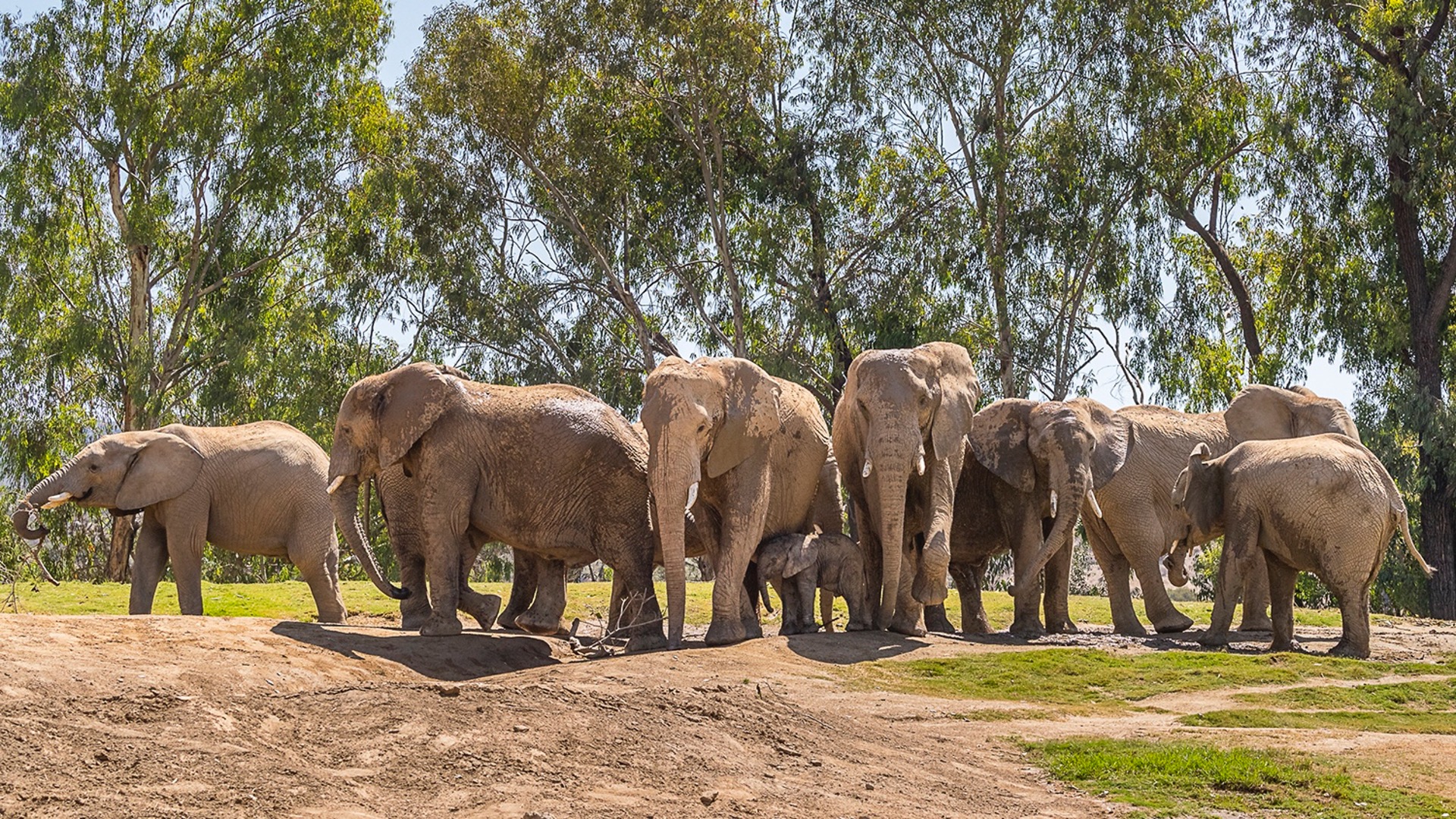BY Nadine Lamberski, D.V.M., Dipl. ACZM, Dipl. ECZM (ZHM) and Lisa Peterson
Dr. Nadine Lamberski is the Chief Conservation and Wildlife Health Officer for San Diego Zoo Wildlife Alliance.
Lisa Peterson is the Executive Director of the San Diego Zoo Safari Park and Senior Vice President for San Diego Zoo Wildlife Alliance.
Imagine a dusty, barren landscape so parched and shriveled from extreme drought that thousands of animals living there collapsed and died from starvation and thirst. That was the dire situation facing elephants in the country of Eswatini in southern Africa in 2003.
The wildlife officials managing a reserve in Eswatini were faced with an unimaginable choice. They would have to cull a herd of elephants to spare enough water and vegetation for at least some of the other endangered species there to survive. Thankfully, there was an alternative—a salvation for those elephants who otherwise would have been killed.
San Diego Zoo Wildlife Alliance, an international nonprofit conservation organization with two front doors—the San Diego Zoo and the San Diego Zoo Safari Park—provided a team of experts and extensive resources to safely rescue and relocate these elephants to the United States. Here, they could thrive, create families, and live out their lives in safety, where food and water are plentiful, and their every need is met.
But not everyone wanted those elephants to survive. At the time we rescued the herd—many of whom are living and thriving today at the San Diego Zoo Safari Park—a small but vocal group of people attempted to sabotage the rescue. Some sued the U.S. Fish and Wildlife Service, trying to block the permit and stop the rescue. They shared in court their perspective that the elephants would be better off dead. Thankfully, the court denied their petition and the elephants survived.
Another group, the Nonhuman Rights Project, has failed in its legal efforts to gain human legal rights for animals. Every court in the United States that has considered the Nonhuman Rights Project’s claims has denied them, including most recently in November 2022 in California. These kinds of efforts are sadly misdirected. Wildlife depends on people to help put an end to the real threats to their survival, which is what our organization and our partners do worldwide across hundreds of conservation projects every day.
Elephants and countless other endangered species now face extinction. To save them, we direct significant resources toward real, scientifically backed and proven actions; support local communities that live with elephants; and collaborate with world-renowned partners and wildlife agencies driving toward impactful conservation solutions.
The seven elephants we rescued in 2003 are now thriving. Their families residing at the Safari Park and other partnering zoos have grown, and the ones here are experiencing the joys of life in one of the most beautiful places in the world — America’s finest city. Millions of children are awestruck by observing and learning about wildlife at the San Diego Zoo and Safari Park every year, and these elephants contribute directly toward the health and protection of their cousins in Africa.
Elephants face countless challenges to their survival, from their rapidly shrinking historic ranges to extreme drought to growing human-wildlife conflict and poaching fueled by the illegal ivory trade. San Diego Zoo Wildlife Alliance has been steadfastly committed to their conservation and protection for decades, and is developing innovative approaches to elephant care in San Diego and in Africa.
We directly support the rescue, rehabilitation and rewilding of orphaned elephants in northern Kenya through our deep, and always growing, understanding of their health and nutritional, behavioral and social needs.
Our elephant experts record calf weights, body condition and other data at the Safari Park. That crucial health data helps world-renowned, leading and trusted African partners in conservation provide the best care and nutrition to rescued orphans.
Those orphaned calves also benefit directly from the elephant moms at the Safari Park. We’re analyzing the nutritional composition of mothers’ milk as their calves grow to help refine the formula that’s bottle-fed to orphaned elephants in Africa.
And there’s more. Our herd provides critical health data on a devastating virus — the endotheliotropic herpes virus — that is found in elephants around the world. Scientists in our Molecular Diagnostics Lab are conducting research that may hold key answers for a vaccine against the deadly virus. We are putting our resources toward the pursuit of a cure.
San Diego Zoo Wildlife Alliance is open and transparent about the care we provide our residents because we know it’s the best. Our elephant families thrive in habitats designed especially for them, providing everything they need to live their best lives.
The knowledge we gain from caring for elephants here and abroad, as well as our efforts working with leading partners in Africa, may well be the difference between whether our children grow up in a world with these magnificent animals or in one where they exist only in books, or on a computer screen.
San Diego Zoo Wildlife Alliance is proudly made up of 3,000 team members, supported by 2,000 volunteers and countless members of our community who make all of this work possible. We are united in protecting wildlife and supporting a world where all life thrives.


